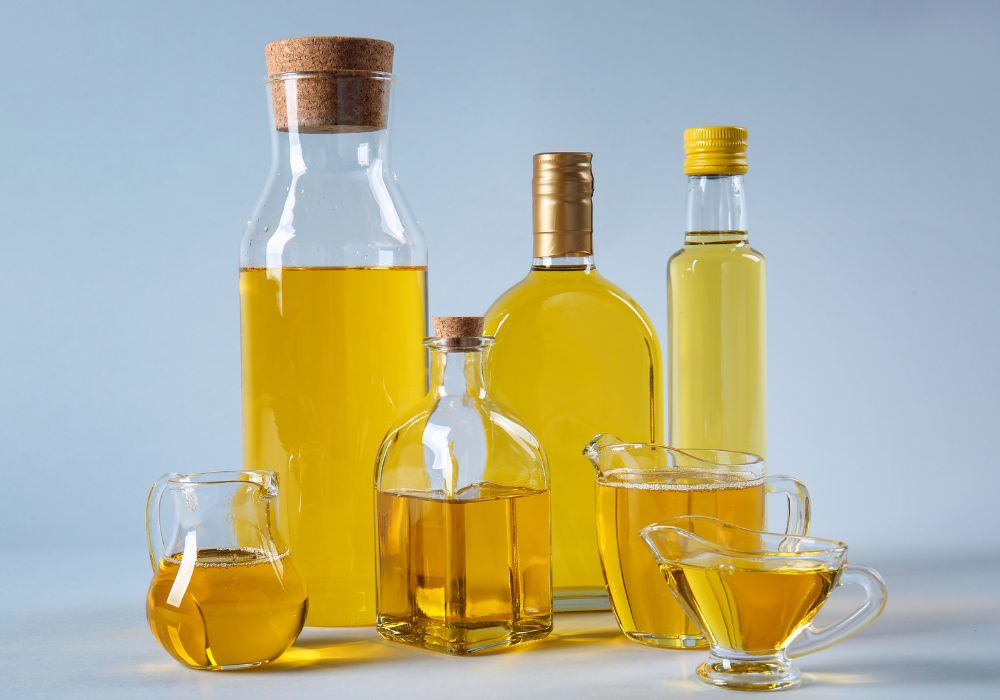The quintessential British dish, fish and chips, has been a beloved culinary staple for generations. Central to its appeal is the quality of the fish, which, when paired with perfectly cooked chips and a generous portion of vinegar, creates a truly satisfying meal. But with so many fish options available, choosing the right one isn’t always easy! So, let’s look at the traditional favourites, explore some newer alternatives, and see what oil is the best for deep frying.
Cod: The Classic Choice
When most people conjure up an image of fish and chips, cod is likely the first fish that springs to mind. This is due to its long-standing reputation as the perfect fish for deep-frying. Cod boasts a delicate, mild flavour that complements the crispy batter without overpowering it. Its firm, white flesh holds together beautifully during frying, resulting in a succulent and flaky interior. While cod is readily available, it is important to check its sustainability status.
Haddock: A Flavourful Contender
While cod often takes centre stage, haddock is a worthy competitor for the fish and chips crown. It offers a slightly sweeter and more robust flavour compared to cod, making it a preferred choice for many. Haddock also has a firmer texture, which can be advantageous for maintaining its shape during frying. However, it’s worth noting that haddock can be more variable in quality and availability compared to cod.
Pollock: The Sustainable Alternative
In recent years, pollock has emerged as a popular choice for fish and chips, particularly due to its sustainability credentials. As a white fish with a mild flavour similar to cod, pollock is a suitable substitute for those seeking a more environmentally friendly option. It is also generally more affordable than cod or haddock. While some argue that pollock lacks the same level of flakiness as cod, many consumers find it a delicious and satisfying alternative.
More Unusual Fish for UK Fish and Chips
While the classics like cod and haddock are always popular, the UK’s rich coastal waters offer a variety of lesser-known fish that can make for exceptional fish and chips. Here are eight to consider:
- Megrim: A flatfish with a delicate, sweet flavour and firm texture. Its mild taste makes it a versatile choice for different batters and accompaniments.
- Lemon Sole: Another flatfish with a similar profile to megrim, but slightly richer in flavour. Its delicate flesh is perfect for a light batter.
- Skate: Once a common fish and chips choice, skate has seen a resurgence in popularity. Its wings have a cartilaginous texture and a unique flavour that some people love.
- Dab: A smaller flatfish with a mild, sweet flavour. Dab is often overlooked but can be a delicious and sustainable option.
- Gurnard: With its bright red colour and distinctive head, gurnard might look unusual, but its firm, white flesh is delicious. It has a slightly sweet flavour and a good texture for frying.
- Sea Bass: While more commonly associated with fine dining, sea bass can make a fantastic fish and chips. Its delicate flavour and firm flesh hold up well to deep-frying.
- Whiting: This small, white fish has a delicate flavour and a firm texture. Whiting is a sustainable choice and can be a delicious alternative to the more common options.
Remember, the best fish for fish and chips is ultimately a matter of personal preference. Experiment with different varieties to discover your new favourite!
Can You Use Freshwater Fish for Fish and Chips?
While the UK boasts a diverse range of freshwater fish, they are generally unsuitable for the classic fish and chips experience. Species like pike, perch, carp, and trout, all of which are common in UK waters, tend to have softer, flakier textures and milder Flavors than their saltwater counterparts. This makes them less suitable for the crispy, firm texture and robust flavour typically desired in fish and chips. For the best results, it’s advisable to stick with traditional saltwater options like cod, haddock, or pollock.
Choosing the Right Fish for Your Fish and Chips
The best fish for your fish and chips ultimately depends on personal preference. If you prioritise a delicate flavour and tender texture, cod is an excellent choice. For those who enjoy a sweeter and more robust taste, haddock might be the preferred option. And if sustainability is a key factor, pollock is a viable and delicious alternative.
When selecting fish for your fish and chips, consider the following factors:
- Freshness: Choose the freshest fish possible and the best cut for frying. This will significantly impact the flavour and texture of your dish.
- Sustainability: Choose fish from sustainable sources to help protect marine ecosystems.
Personal preference: Experiment with different types of fish to find your favourite.
The Importance of Oil Quality
While the choice of fish is crucial, the oil used for frying is equally important. Palm oil, when sourced sustainably, is an excellent choice for deep-frying fish and chips. Its high smoke point allows for even cooking without burning, and its neutral flavour doesn’t interfere with the taste of the fish. Additionally, palm oil helps to create a crispy exterior while maintaining a tender interior. It’s essential to choose palm oil certified by the Roundtable on Sustainable Palm Oil (RSPO) to ensure it is produced without harming the environment or exploiting communities.
By carefully selecting the right fish and using high-quality, sustainable palm oil – and the best recipe for fish and chips! – you can create a truly exceptional fish and chips experience.
Sustainable RSPO Certified Palm Oil for Chippies and the Restaurant Industry
Are you looking for sustainable, premium grade frying oil? Choose Frymax! Our sustainably sourced palm oil is relied on by chippies, food trucks, hotels, and restaurants across the country to serve up high-quality fried foods. If you’d like to learn more or purchase RSPO certified palm oil for your restaurant, get in contact with Frymax.
Become a Frymax member today to gain access to exclusive content, expert frying advice and the chance to enter our fantastic competitions.






